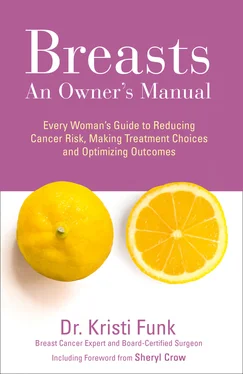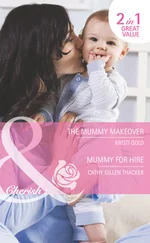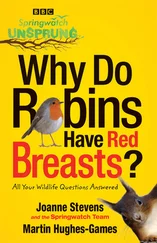Similar to the EMF from cell phones, magnetic energy from power lines produces a low-frequency, nonionizing form of radiation that doesn’t mess with the breast. Maintaining that the weak EMF derived from power lines could have a catastrophic biologic effect sounds plausible to most of us because we don’t readily understand physics; but to a physicist, it’s a laughable proposition. 38Consider this factoid: the magnetic field from the earth itself is 150 to 250 times stronger than ones from power lines. If a power line’s small magnetic field could cause breast cancer, then just inhabiting Earth for a few years should lead to a total body cancer transformation.
HORMONE-RELATED HEALTH WORRIES
A lot of women express concern that certain health habits increase their risk—most of which circle the topic of affecting their estrogen levels, since estrogen feeds the majority of breast cancers. However, a bunch of these worries are, in fact, myths.
I’ve repeatedly heard the popular rumor that oral contraceptive pills (OCP)—birth control pills—cause breast cancer. But if you are at normal risk for breast cancer, an unexpected pregnancy will add a lot more worry to your life than OCPs. Strong evidence from fifty-four studies concludes that current OCP users have a tiny 24 percent increase in the risk of having breast cancer diagnosed while they are taking OCPs and then the risk becomes 16 percent one to four years after stopping, 7 percent five to nine years after stopping, and no risk ten years out. 39Why do I call that “tiny”? Let me make this brilliant point: if you are twenty, the probability of developing breast cancer by age thirty is 1 in 1,567, so it only takes one more breast cancer case (2 in 1,567) to suddenly proclaim that rates went up 100 percent. And since studies say it’s 24 percent, your new risk will actually be 1.24 in 1,567 on OCPs. Pretty tiny, right?
Depending on your personal risks, the bump in breast cancer might be offset by the fact that OCPs reduce colorectal cancer by 14 percent and endometrial (uterine) cancer by 43 percent. 40And if you’re a BRCA gene mutation carrier, there’s OCP good news for you too. After six years of use, OCPs reduce the risks of ovarian cancer by 50 percent for BRCA-1 and 60 percent for BRCA-2—with no increase in breast cancer. 41All premenopausal BRCA carriers with ovaries who are not trying to get pregnant should take OCPs to slash ovarian cancer risk.
Women who have had or are considering in vitro fertilization (IVF) also shouldn’t fret that it causes breast cancer. Given the causative connection between hormones and breast cancer, fertility treatments have come under suspicion since they involve ten times the normal exposures of estrogen and progesterone each time the ovaries are stimulated. 42No evidence strongly connects fertility drugs with increased risk. A multitude of studies conclude that prospective moms using any of the ovarian stimulation medications associated with IVF, including clomiphene citrate (Clomid), gonadotropin-releasing hormone (GnRH antagonist, Lupron), human chorionic gonadotropin (hCG), follicle stimulating hormone (FSH), luteinizing hormone (LH), and progesterone, do not have a higher risk of breast cancer. 43In fact, works published since 2012 on the matter not only suggest a lack of interaction, but even a protective role of ovarian stimulation, as emphasized in two meta-analysis studies that pool the results of over 1.5 million infertile women who underwent IVF. 44And for those of you who have endured over seven cycles of IVF, I have reassuring news: the largest, most comprehensive study to date followed over 25,000 infertile Dutch women for twenty-one years, and guess what? Your tenacity paid off (I hope with a baby too): breast cancer risk was significantly lower in women undergoing seven or more cycles compared to those receiving one to two cycles. 45For all the twenty-one years they were followed, breast cancer risk among IVF-treated women was no different from that in the general Dutch population. There are exceptions, naturally, but they’re few. For example, one notable study from Australia did find an increased rate in women starting IVF under the age of twenty-four, but that’s an unusually young group to undergo IVF, and the study otherwise showed no overall increase in risk. 46
Abortions and stillbirths don’t cause breast cancer either, though a link has often been suspected due to the estrogen surges that occur with pregnancy. I want all of you affected personally by any type of terminated pregnancy to read on and know this good news applies to you ! When most women hear the word abortion , they commonly consider that word to mean an induced abortion, a medical procedure performed to voluntarily end a pregnancy. But there’s also the natural event of a spontaneous abortion, usually referred to as a miscarriage, which means the loss of a fetus before five months (twenty weeks) into the pregnancy. These generally result from genetic issues with the fetus that are incompatible with life, or from problems with the environment in which the unborn child is growing. And then there’s a stillborn birth, which refers to the death of a fetus after five months’ gestation while still in the uterus. While the cause is usually unknown, common identifiable reasons include nicotine, alcohol, or drugs taken by the mother, physical trauma, umbilical cord problems, Rh disease, and radiation poisoning.
Research examining whether abortions cause breast cancer should relieve any concerns you have. Data from fifty-five studies spanning sixteen countries and including 83,000 women with breast cancer show no connection between breast cancer and spontaneous or induced abortions. 47A panel of over one hundred leading world experts convened by the National Cancer Institute (NCI) in 2003 performed a rigorous review of the scientific evidence regarding abortions and breast cancer risk. 48They concluded that no correlation exists between breast cancer and abortion, either spontaneous or induced. They deemed the level of scientific evidence for these findings as “well established,” which is the highest level achievable.
With such an important and charged issue as abortion, we must be right when declaring a connection or not. We must rely upon data that is free from responder bias. We deserve and have the highest level of evidence from which to draw conclusions. Hence the consensus statements of both the 2003 NCI report and the concurrent American College of Obstetricians and Gynecologists (ACOG) Committee on Gynecologic Practice report rely upon only the most rigorously conducted research. Ethical and political disputes aside, let’s hear this good news clearly: “the totality of worldwide epidemiological evidence indicates that pregnancies ending as either spontaneous or induced abortions do not have adverse effects on women’s subsequent risk of developing breast cancer.” 49
DOES CHANGING YOUR ANATOMY CAUSE CANCER?
Making changes to your natural anatomy doesn’t cause breast cancer, though you might worry it would based on misinformation that trauma (accidental or surgical) upsets the natural state of things.
Let’s first talk breast implants: if you have them, should you have regrets too? Whether saline or silicone, above or below your chest muscle, decades old or brand new, textured or smooth, round or shaped, implants do not cause breast cancer. 50In fact, a study of 3,139 women who got an augmentation between 1953 and 1980 shows that, after an average of 15.5 years, these women have 31 percent less breast cancer than would be expected. 51And this isn’t the only such study. A meta-analysis of seventeen studies also showed a significant decrease in cancer incidence among those with cosmetic implants by one-third. 52Before you rush out to protect your breasts with implants, the decrease in risk likely corresponds to the facts that women with implants generally have a lower body mass index (BMI) than those without implants, and have their children prior to age thirty, two known factors that decrease breast cancer. 53That being said, implants can complicate the detection of an existing breast cancer, so I do recommend more rigorous screening for those who have them. Generally speaking, women with breast implants in whom breast cancer develops are diagnosed at similar stages and have equivalent survival rates as compared with breast cancer patients without implants. 54
Читать дальше












